INTRODUCTION
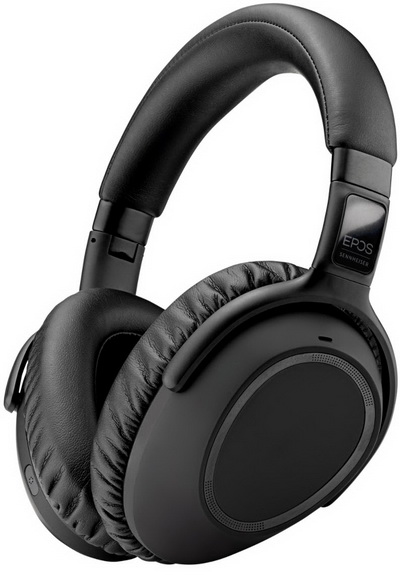
Due to COVID-19 many people all over the world have been working from home, some since February/March of this year and some since late October, early November. Working from home may sound easy but in many cases it's really not (pets and kids are usually the reason), especially if you need to make and receive calls or even "worse" participate in group calls. The same of course applies for online courses/lessons so as expected headsets have become all but a must for many people during these strange times and sales have gone through the roof. ANC headsets have become especially popular because of this and so today I’ll be testing an over the ear model designed specifically for what people need today both at work and at home, the ADAPT 660 by EPOS Sennheiser.
ΕPOS is an audio company developing and selling devices for business professionals and the gaming community. Based on leading and advanced technologies, the newly established Danish company EPOS will deliver high-end audio solutions designed for Enterprise Solutions and Gaming headsets – with design, technology and performance as paramount parameters. EPOS derives from Latin and ancient Greek and is used to describe epic stories, speech and poetry. The name encapsulates our dedication to create solutions that enforce ways of communication and unleash human potential through the power of audio. EPOS operates in a global market with offices and partners in more than 30 countries and builds on more than 115 years of experience in sound and innovation. Find more information about EPOS at www.eposaudio.com.
The ADAPT 660 may not be primarily aimed towards audiophiles but still since this is the flagship headset of their professional line EPOS Sennheiser wanted to create something unique and so to that end they equipped it with two 40mm dynamic stereo drivers (17Hz-23KHz frequency response with 46 Ohms impedance and 118dB sensitivity) and three advanced Digital MEMs beamforming microphones (150Hz-68KHz frequency response) which thanks to machine learning developed algorithms optimize voice pick up for optimal listening experience. The ADAPT 660 also feature Bluetooth v5.0 and UC wireless connectivity (multi-point to mobile and softphone simultaneously / 25 meter range), support for AptX/AptX low latency/AAC/SBC audio codecs, quad microphone adaptive ANC system (background noise can be up to 88 dBA), exterior earcup controls, foldable and rotating earcups, 5 sound effect modes (neutral/club/movie/speech/director-user defined), voice prompts in 7 different languages (English/German/French/Spanish/Chinese/Japanese/Korean) and up to 30 hours of audio playback via its built-in lithium-ion rechargeable battery (700mAh/2.7Wh).
SPECIFICATIONS AND FEATURES

PACKAGING AND CONTENTS
EPOS Sennheiser ships the ADAPT 660 inside a small and plain cardboard box that just has the company logo at the front and a sticker with a product drawing.
A quick start guide is printed on the interior of the box.
Contained inside the box is the ADAPT 660, UC USB dongle, soft carrying/storage case, 1.2 meter long USB-C to USB cable, 1.4 meter long 3.5mm to 3.5mm cable, quick start guide, technical specifications paper and a safety paper.
THE ADAPT 660

 The soft bundled case has just enough room inside the ADAPT 660 and its cables.
The soft bundled case has just enough room inside the ADAPT 660 and its cables.
Much like most headsets in its class the ADAPT 660 is primarily made out of plastic, leatherette and aluminum but unlike most it weighs just 227g.
This is clearly a medium sized headset.
Both earcups are also made out of plastic but have an aluminum ring on the outside.
The EPOS Sennheiser logo is placed just over both earcups.
I was a bit surprised to see that the bluetooth on/off switch was located at the front top of the right earcup (almost hidden).
Moving at the rear of the right earcup we find the ANC switch (max/adaptive/off) and the dedicated teams/pairing button while at the base we find the USB-C and 3.5mm ports.
The exterior of the right earcup also acts as a touch pad so you need only swipe up/down to increase/reduce volume, left/right to change tracks and mute/unmute the microphone, single tap to play/pause and accept calls, double tap to turn talkthrough on/off and put calls on hold, 1 second tab to reject/end calls, 2 seconds tap to activate voice assistant/Alexa and 4 seconds tap to check battery life.
All of the voice microphones are also located at the front of the right earcup.
Left and right markings are placed on the fabric in each earpad as seen above.
Leatherette is also used to dress the headpad which is soft and well padded.
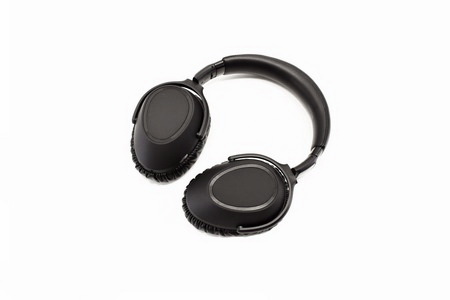
 People who move a lot will be happy to learn that the earcups fold and rotate to make it easier to store and/or carry (folding the headset turns it off).
People who move a lot will be happy to learn that the earcups fold and rotate to make it easier to store and/or carry (folding the headset turns it off).
The headband can extend on either side up to 37mm (74mm total) via 15 increments (not visible ones).
CONTROL APP

The Android/iOS control app by EPOS Sennheiser detects any available headsets automatically (the intro picture is probably linked to that).



If you haven't checked the quick start manual no worries since the app also has it.
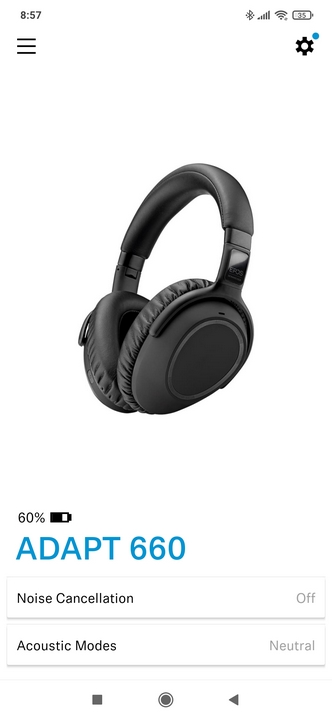
From the main tab you can see a picture of the headset, the current battery levels and you can access the two main tabs.

Noise cancellation has 3 available modes, off, adaptive (which is ideal for most scenarios) and maximum.



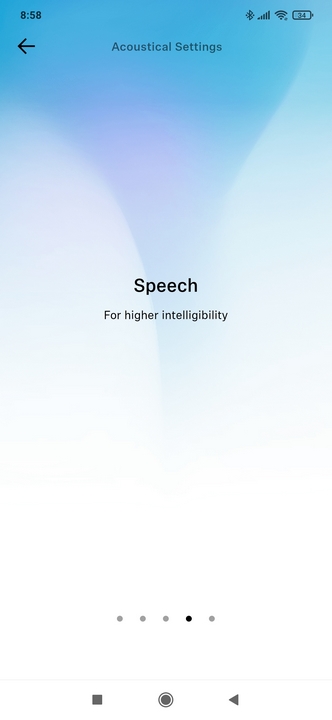

There are also 4 available acoustic modes plus a custom (director) one.

By choosing the custom preset you can fine tune audio to your liking.

Inside the settings tab you can enable/disable many features including smart pause, call enhancement, tone and voice prompts, sidetone, multipoint and Amazon Alexa (you can also check the current firmware version and reset the headset to its factory settings).
CONCLUSION

The sole reason i requested the ADAPT 660 from EPOS Sennheiser was because i wanted to test something which i think could be of use to everyone either working or attending classes from home. So, my primary concern was not so much audio performance in general but just how good its ANC would be and after spending almost 2 weeks with it i can say that i didn't expect such good results, not just in terms of ANC but across the board. Audio quality is actually very good, mids and highs are very crisp and detailed and in terms of bass even though you may not get impressed by it it's certainly above average. Yes, the ADAPT 660 doesn't support some of the hi-res wireless audio codecs like LDAC but aptX should be more than enough for most people. How about its ANC however? Well i have used and/or tested several ANC headsets over the years, most of which blocked out pretty much everything. The ADAPT 660 doesn't do that however, yes it blocks like 95% of everything happening around you but that remaining 5% allows you to have some awareness of your surroundings and that for me is the best possible approach/result (needless to say the not so aggressive ANC also results in better audio performance). Of course, that may not be ideal for some people so do take this into account. The good news also extend to the other end of your calls as well since the three advanced Digital MEMs beamforming microphones deliver crystal clear audio something which is obviously extremely important for a product like this. As for battery life i was hardly able to exceed 19 hours with ANC turned on and set to adaptive mode and the volume at roughly 80%. I do realize that most people will not have the volume set quite as high so up to 20-21 hours with ANC on seem logical (recharge time is roughly 3 hours).
Just over a month before we say goodbye to 2020 the ADAPT 660 BT ANC Headphones by EPOS Sennheiser retail for USD291.96 inside the USA (Amazon.com) and for 379.22Euros inside the EU (Amazon.de) a price tag which is very balanced and set lower compared to similar models by SONY and BOSE (at least in the USA – pricing needs tweaking on this side). Overall, the ADAPT 660 is a great all-around wireless headset which can be used not only for calls but also to watch movies, play games and even listen to music. Add the near-excellent ANC, the very long battery life which in most cases can easily surpass 20 hours and the crystal clear audio for the other end thanks to its 3 microphones and it’s no wonder that it gets the Golden Award.

PROS
- Very Good Build Quality
- Audio Reproduction (Crisp, Detailed Mids & Highs)
- Bluetooth v5.0
- Near Excellent Active Noise Cancellation (3 Modes)
- 5 Available Effects
- 7 Available Microphones
- Touch Controls
- Foldable/ Rotatable Earcups
- Battery Life (Up To 30 Hours)
- Bluetooth, UC & Wired Connectivity
- Bluetooth & UC Multipoint
CONS
- Price (For Some)
- Lack Of Support for Hi-Res Codecs
- Carrying/Storage Case Quality

 O-Sense
O-Sense





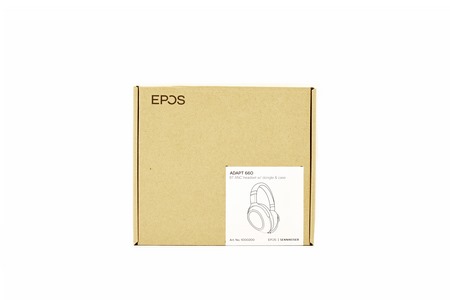



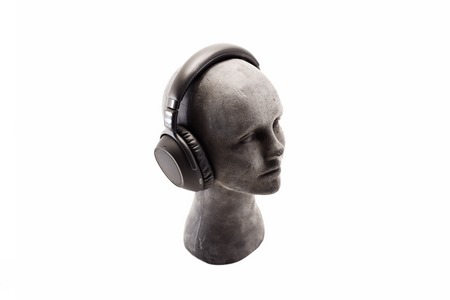



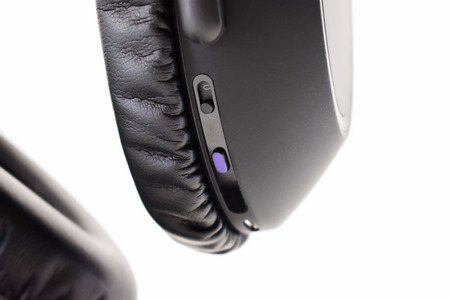










.png)

